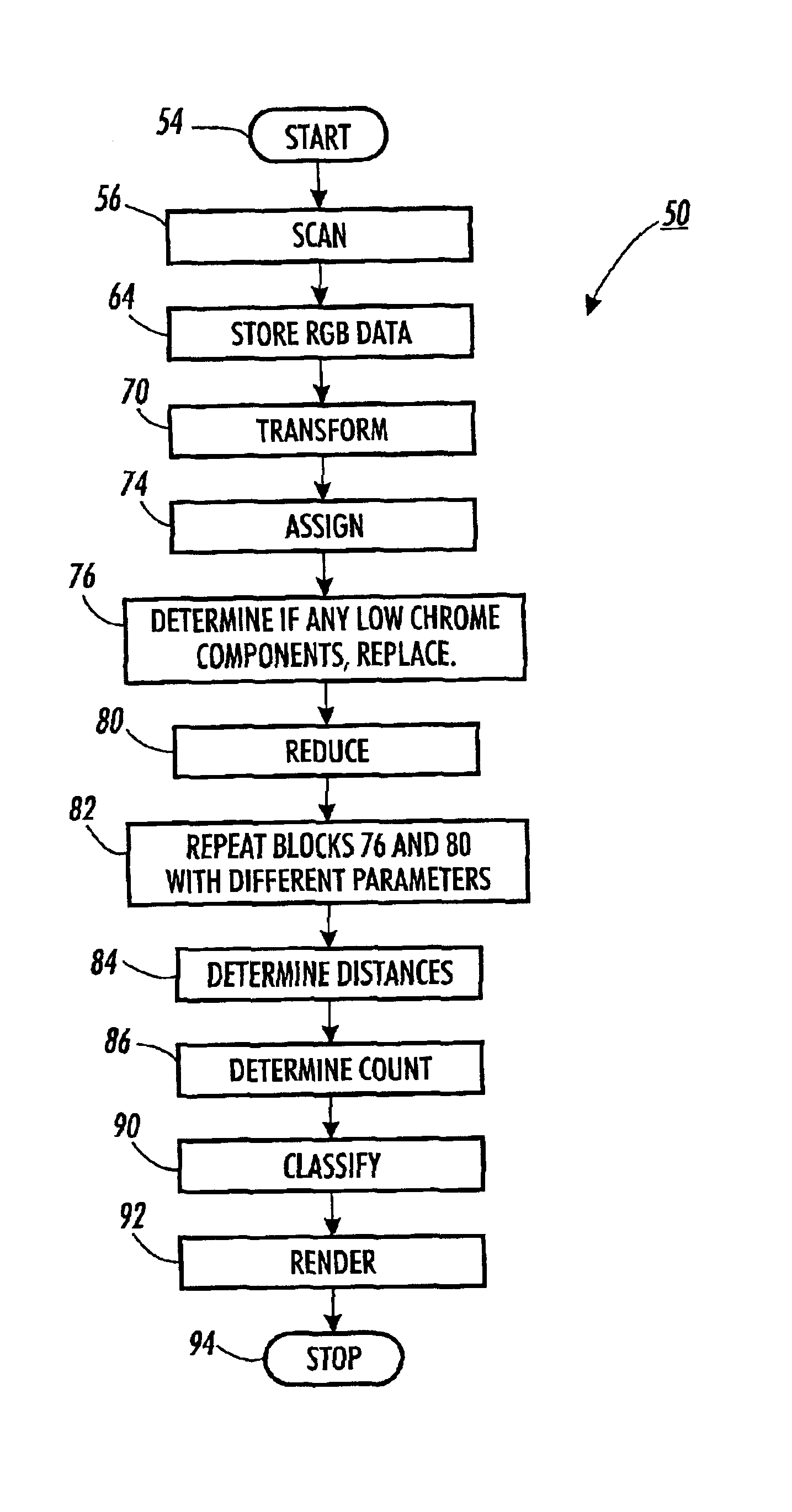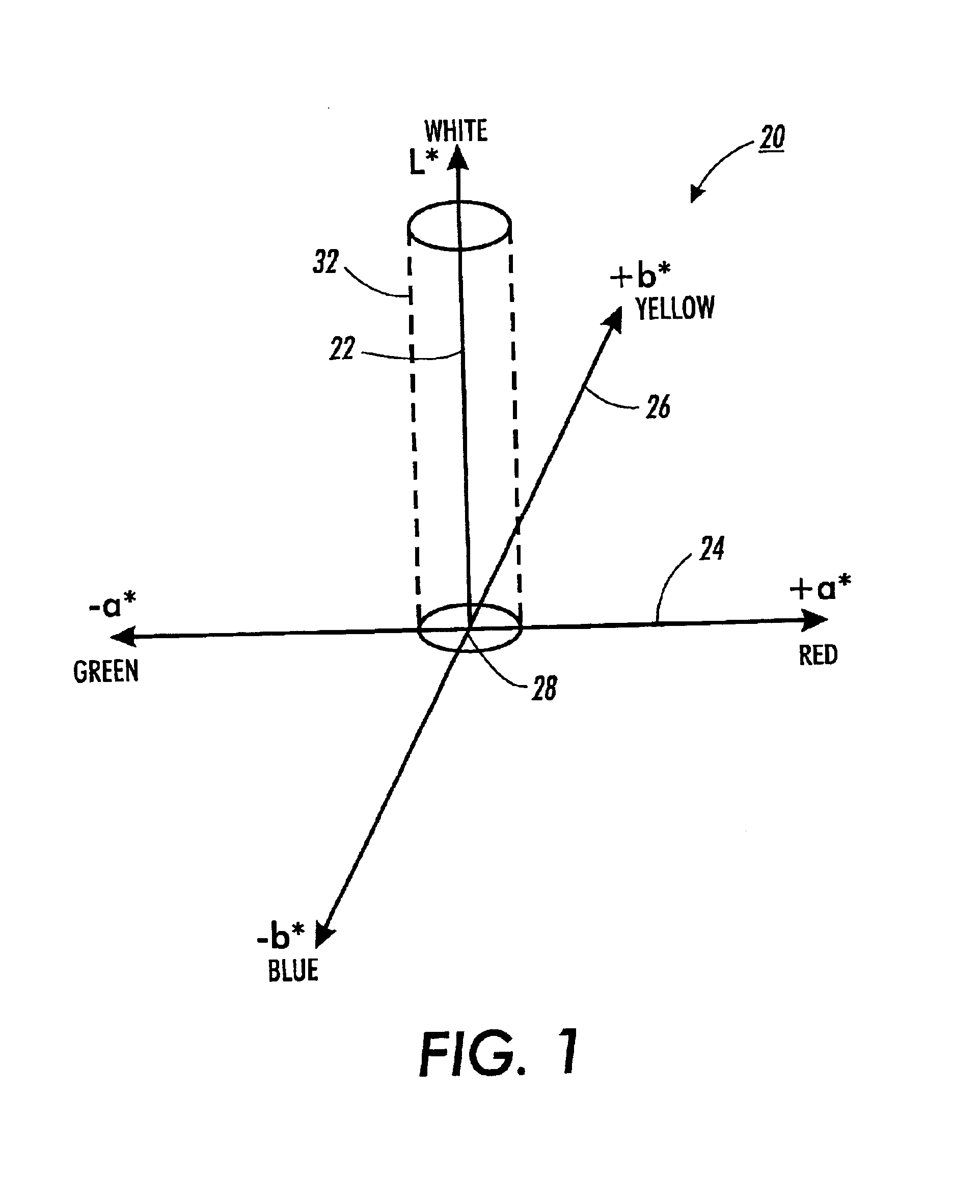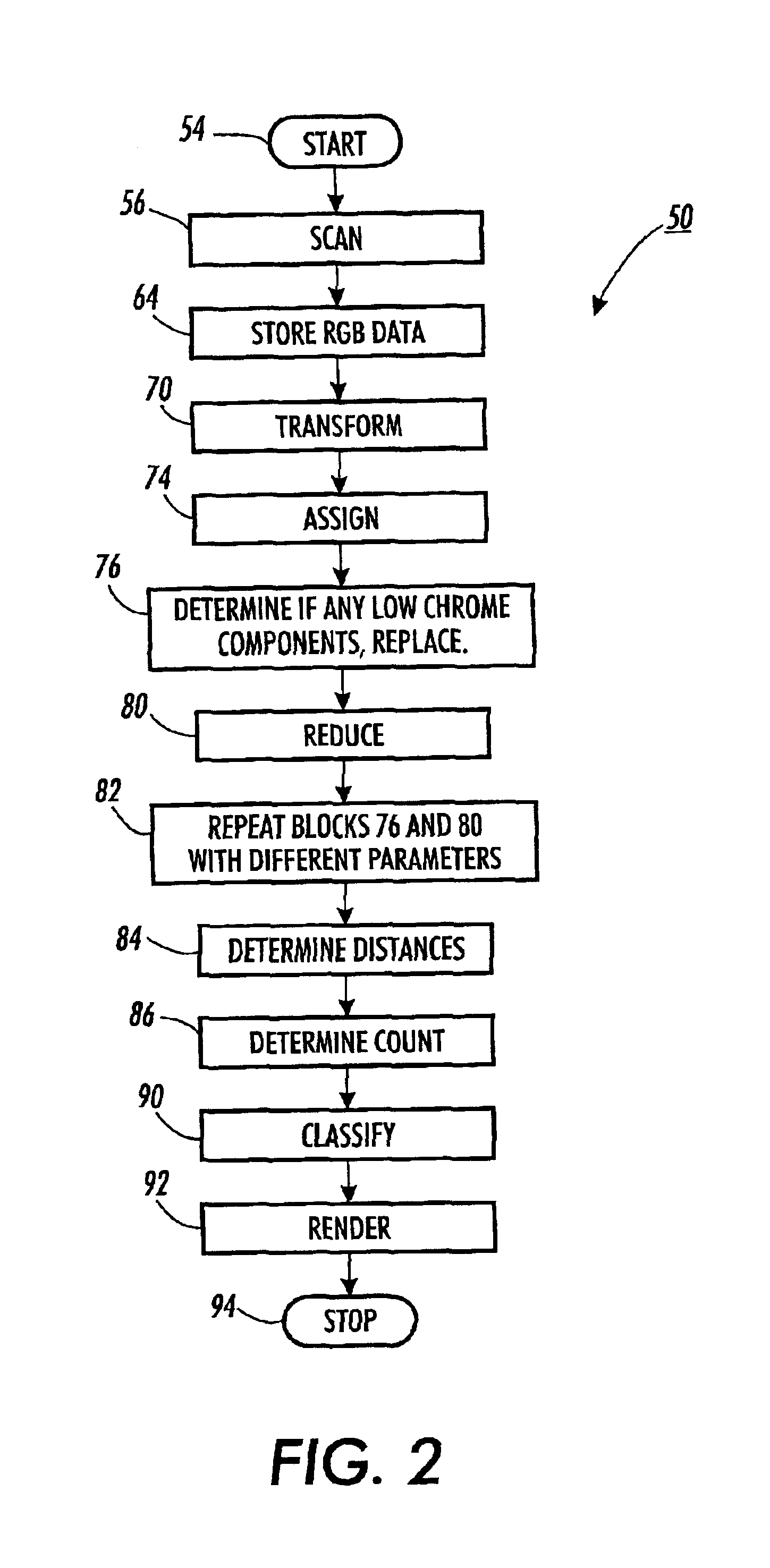Detecting small amounts of color in an image
a color and image technology, applied in the field of digital printing, can solve the problems of unsatisfactory color pixels and overwhelming population of color pixels, and achieve the effects of reducing rendering time, and increasing the reliability of decisions
- Summary
- Abstract
- Description
- Claims
- Application Information
AI Technical Summary
Benefits of technology
Problems solved by technology
Method used
Image
Examples
Embodiment Construction
[0022]With reference to FIG. 1, neutral colors in the preferred embodiment are determined within the L*a*b* color space 20, which is generally defined by three (3) axes (i.e., the L* axis 22, the a* axis 24, and the b* axis 26). The L* axis 22 represents a neutral axis that transitions from black to white; the a* axis 24 transitions from green to red; and the b* axis 26 transitions from blue to yellow. A point 28 at which the three (3) axes 22, 24, 26 intersect represents the color black. Because the L* axis 22 transitions from black to white, positions along the L* axis represent different gray-scale levels. Furthermore, close-to-neutral colors are defined as:
a*2+b*2n(L*)[0023]where: a*2+b*2 represents a square of the distance from the L* axis at any point (a*, b*) along the L* axis; and[0024]√{square root over (Tn(L*))} defines respective distances, or thresholds, from the L* axis, above which a color of lightness L* is no longer considered neutral.
[0025]In the preferred embodimen...
PUM
 Login to View More
Login to View More Abstract
Description
Claims
Application Information
 Login to View More
Login to View More - R&D
- Intellectual Property
- Life Sciences
- Materials
- Tech Scout
- Unparalleled Data Quality
- Higher Quality Content
- 60% Fewer Hallucinations
Browse by: Latest US Patents, China's latest patents, Technical Efficacy Thesaurus, Application Domain, Technology Topic, Popular Technical Reports.
© 2025 PatSnap. All rights reserved.Legal|Privacy policy|Modern Slavery Act Transparency Statement|Sitemap|About US| Contact US: help@patsnap.com



